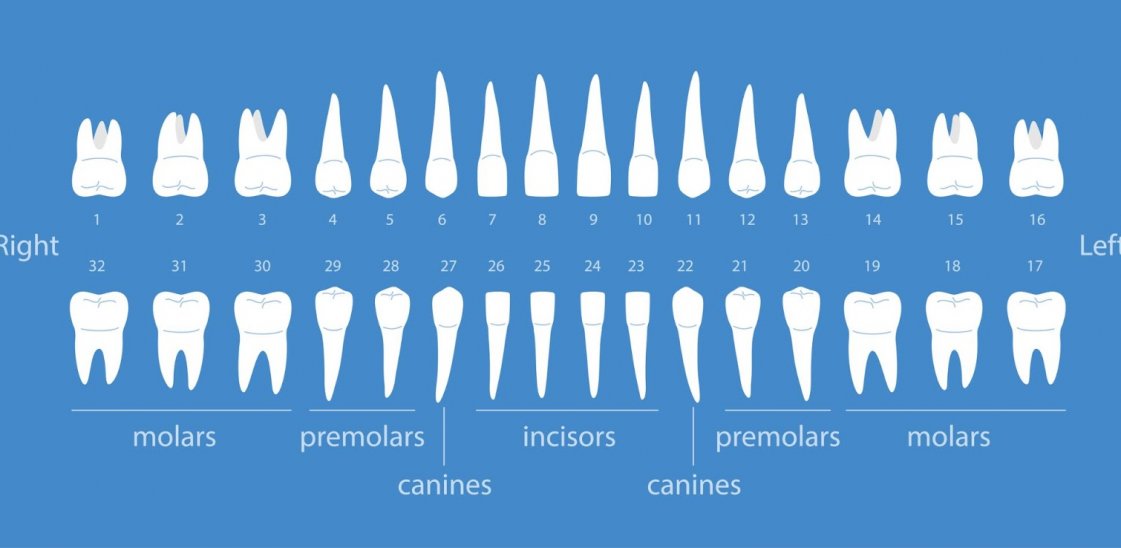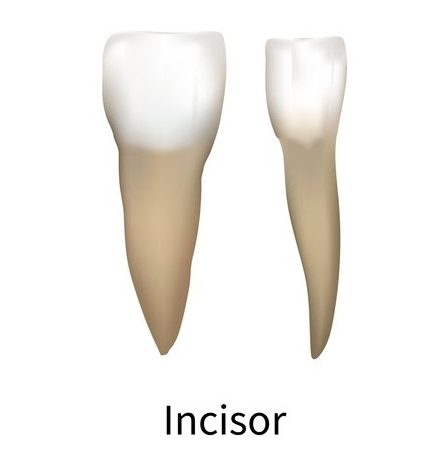
What are the different types of teeth and their functions?
Teeth are a crucial part of the body that enable us to eat and speak. Looking after your teeth is a simple process for most people. Providing you brush your teeth properly, floss, use mouthwash daily, visit the dentist regularly and use effective dental products, you shouldn’t have any serious issues with your dental health.
In this article, we explore the different types of teeth you have, along with their functions.
What are your front teeth called?
At the front of the mouth, there are four teeth at the top and the bottom that are similar in shape. Often tall in appearance, these teeth are known as incisors. Due to their thin, sharp edge, they’re useful for cutting through soft food, and as they’re situated at the front of the mouth, they play a significant role in breaking down food.
Incisors are the first baby teeth to come through at around six months old, often causing pain and discomfort to infants in a process known as teething. The adult incisors then grow through somewhere between the ages of six of eight.[1]
What are canine teeth?
Named after the fang-like appearance that is often associated with dogs, canines are the four pointed teeth positioned on both sides of the incisors. As the longest and sharpest teeth in the mouth, canines are the most effective at tearing through thick, dense foods.
Canine teeth have the longest root of any teeth in the mouth, and they come through in a specific order. Upper baby canines usually come through first between the ages of 16 and 20 months, followed by the lower baby canines. However, it happens the other way around with adult canines, lower adult canines coming through first around the age of nine years old, followed by the upper adult canines.[1]
What are the back teeth called?
Whenever you’re eating, you’ll need to use your back teeth to grind food so it can be swallowed without causing you to choke. These teeth – known as molars and premolars – are the biggest teeth in the mouth, and they possess a large, flat surface area with ridges around the edges, making it easy to cut into food.[1]
Which teeth are molars?
All twelve teeth in the back of the mouth are known as molars, with the teeth between them and canines being labelled premolars.
Molars and premolars are similar, but the difference between the two is that premolars are smaller and, instead of having points in all four corners, they only have two on either side – the front and the back.
First molars come through between 13 and 19 months, with adult premolars appearing between nine and 11 years of age. As for molars, they typically come through between the age of 25 and 33 months, with the adult molars also erupting between 12 and 13 years of age.
Additionally, wisdom teeth also fall into the category of molars, but unlike molars, they don’t appear twice, instead they only come through as adult teeth. Wisdom teeth usually come through at the very back of the mouth between 17 and 21 years of age. However, some don’t appear as fully as other teeth, some don’t appear at all and others cause pain, leading to the need for a surgical procedure to remove them permanently from the gums.[1]



Resources:




